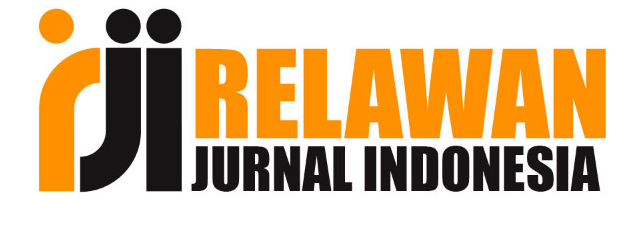PERBANDINGAN KINERJA PASAR MODAL SYARIAH DAN KONVENSIONAL : SUATU KAJIAN EMPIRIS PADA PASAR MODAL INDONESIA
DOI:
https://doi.org/10.36982/jiegmk.v8i1.234Abstract
The purpose of this study is to investigate the performance of syariah and conventional stock market in Indonesia. This paper uses Jakarta Islamic Index (JII) to represent syariah stock market and Jakarta Composite Index (JCI) to represent conventional stock market. The Treasury bill rate and the MSCI World index are used as risk free rate and stock market benchmark. Daily data were divided into five periods such as pre-asian financial crisis, during asia financial crisis, pre-subprime mortgage financial crisis, during the subprime mortgage financial crisis, and full sample period. We use three risk adjusted performance measures: Sharpe ratio, Treynor ratio, and Jensen alpha. This study shows that the conventional stock market produced more return compared to syariah in all sample periods.
Key words: Islamic stock market; conventional stock market; Sharpe Ratio, Treynor Ratio, Jensen alpha
References
Abaity, M. & Ahmad, R. 2008. Performance of Syariah and Composite Indices: Evidence From Bursa Malaysia. ASIAN Academy of Management Journal of Accounting and Finance, Vol. 4, No. 1 23-43, 2008.
Abdullah, N.A.B. & Abdullah, A.H. (2009). The Performance of Malaysian Unit Trusts Investing in Domestic versus International Markets. Asian Academy of Management Journal of Accounting and Finance. AAMJAF, Vol. 5, No. 2, 77-100, 2009.
Ait-Sahalia, Y., Andritzky, J., Jobst, A., Nowak, S. & Tamirisa, N. (2012). Market Response to Policy Initiatives during the Global Financial Crisis. Journal of International Economics 87 (2012) 162-177.
Ashraf, S.H. & Sharma, D. (2014). Performance Evaluation of Indian Equity Mutual Funds against Established Benchmarks Index. International Jounal of Accounting Research. Vol, 2, Issue 1, ISSN 1000113.
Barau, A.M. (2016). Did Islamic Equities Outperform Conventional Equities in the Gulf Cooperation Council (GCC) Region during and after the Global Financial Crisis. Research Journal of Finance and Accounting. ISSN 2222-1697, Vol. 7, No. 8, 2016.
Bauer, R., Otten, R. & Rad, A. T. (2006). Ethical Investing in Australia: Is There a Financial Penalty. Pacific-Basin Finance Journal 14 (2006) 33 – 48.
Guerard, J. B. 1997. Is There a Cost to Being Socially Responsible in Investing. Journal of Forecasting December 1997.
Hanafi, M. M. & Hanafi, S. M. 2012. Perbandingan Kinerja Investasi Syariah dan Konvensional: Studi pada Jakarta Islamic Indeks (JII) dan Indeks LQ45. EKBISI, Vol. VII, No. 1, Desember 2012.
Hantono, J. 2009. Teori Portofolio Dan Analisis Investasi, Cetakan Keenam. Universitas Gadjah Mada Yogyakarta.
Ho, C. S. F., Rahmand, N. A. A., Yusuf, N. H. M. & Zamzamin, Z. 2014. Performance of Global Islamic Versus Conventional Share Indices: International Evidence. Pacific-Basin Finance Journal 28 (2014) 110-121
Hussein, K. A. 2004. Ethical Investment: Emperical Evidence From FTSE Islamic Index. Islamic Economics Studies Vol. 12, No. 1, August 2004
Husnan, S. 2005. Dasar-dasar Teori Portofolio dan Analisis Sekuritas. UPP AMPYKPN Yogyakarta.
Karim, B.A., Datip, E. & Shukri, M.H.M. (2014). Islamic Stock Market Versus Conventional Stock Market. International Journal of Economics, Commerce and Management United Kingdom Vol. II, Issue 11, Nov 2014 ISSN 2348 0386.
Kreander, N., Gray, R.h., Power, D. M. & Sinclair, C. D. 2005. Evaluating the Performance of Ethical and Non-Ethical Funds: A Matched Pair Analysis. Centre for Social and Environmental Accounting Research.
Kurniawan, R. D. & Asandimitra, N. 2014. Analisis Perbandingan Kineja Indeks Saham Syariah dan Kinerja Indeks Saham Konvensional. Jurnal Ilmu Manajemen. Vol. 2 No. 4 Oktober 2014.
Otoritas Jasa Keuangan. 2015. Roadmap Pasar Modal Syariah Indonesia 2015-2019.http://www.ojk.go.id/id/kanal/syariah/berita-dan kegiatan/publikasi/Pages/Roadmap-Pasar-Modal-Syariah-2015-2019.aspx. Diakses tanggal 24 Maret 2016.
Mallin, C., Saadouni, B. & Briston, R. 1995. The Financial Performance of Ethical Investment Funds. Jounal of Business & Accounting, 22 (4), 483-496.
Mansor, F. & Bhatti, M.I. (2011). Risk and Return Analysis on Performance of the Islamic Mutual Funds: Evidence from Malaysia. Global Economy and Finance Journal Vol. 4 No. 1. March 2011 Pp.19-31.
Miniaoui, H., Sayani, H. & Chaibi, A. (2015). The Impact of Financial Crisis on Islamic and Conventional Indices of The GCC Countries. The Journal of Applied Business Research – March/April 2015 Volume 31, Number 2.
Mishra, A. (2016). Comparative Performance Evaluation of Equity Shares of Indian Cement Industries. International Journal of Business Quantitative Economics and Applied Management Research. Vol. 3, Issue, 3, August 2016.
Natarajan, P. & Dharani, M. 2012. Shariah Compliant Stock in India – A Viable and Ethical Investment Vehicle. Arabian Journal of Business and Management Review (OMAN Chapter) Vol. 1, No. 6 January 2012.
OJK. (2017). Statistik Mingguan Pasar Modal. Juni, Minggu ke-4 (19-22 Juni 2017).
Rathner, S. 2013. The Relative Performance of Socially Responsible Investment Funds. New Evidence From Austria. Working Papers in Economics and Finance No.2013-01.
Reddy, K. & Fu, M. 2014. Does Syariah Compliant Stocks Perform Better than the Conventional Stocks? A Comparative Study of Stocks Listed on the Australian Stock Exchange. Asian Journal of Finance & Accounting ISSN 1946-052x 2014, Vol. 6, No. 2.
Sensoy, A. (2015). Systemic Risk in Conventional vs Islamic Equity Markets. Research Department of Borsa Istambul Working Paper Series No.28 June, 2015.
Setiawan, C. & Oktariza, H. 2013. Syariah and Conventional Stocks Performance of Public Companies Listed on Indonesia Stock Exchange. Journal oaf Accounting, Finance and Economics Vol. 3. No. 1. July 2013. Pp.51-64.
Shamsabadi, H.A. Dargiri, M.N. & Rasiah, D. (2012). A Review Study of Risk-Return Relationship and Performance Measures Comparing Different Industry Sector. Australian Journal of Basic and Applied Sciences, 6(12): 14-22, 2012, ISSN 1991-8178.
Shimada, T. & Yang, T. (2010). Challenges and Developments in the Financial Systems of the Southeast Asian Economies. OECD Journal: Financial Market Trends, Volume 2010-Issue 2.
Shloma, E. 2006. The Financial Performance of Ethical Funds – A Comparative Analysis of the Risk – Adjusted Performance of Ethical and Non-Ethical Mutual Funds in UK. Jonkoping International Business School, Jonkoping University.
Touiti, M. & Henchiri, J.E. (2017). Risk and Performance of Islamic Indexes during Subprime Crisis. Proceedings of the Second American Academic Research Conference on Global Business, Economics, Finance and Social Sciences (AARI17 New York Conference) ISBN: 978-943579-6.
Utz, S. & Wimmer, M. 2014. Are They Any Good at All? A Financial and Ethical Analysis of Socially Responsible Mutual Funds.
Yang, J. Kolari, J.W. & Min, I. (2002). Stock Market Integration and Financial Crisis: The Case of Asia. Applied Financial Economics.
Zaman, M.R. (2009). The Causes and Ramifications of the 2008-2009 Meltdown of the Financial Markets on the Global Economy. Eurasian Journal of Business and Economics 2009, 2 (4), 63-76.
Downloads
Published
How to Cite
Issue
Section
License
Authors retain copyright and grant the journal right of first publication with the work simultaneously licensed under a Creative Commons Attribution License that allows others to share the work with an acknowledgement of the work's authorship and initial publication in this journal.
Â
Authors are permitted and encouraged to post their work online (e.g., in institutional repositories or on their website) prior to and during the submission process, as it can lead to productive exchanges, as well as earlier and greater citation of published work.
Â
LP2M Indo Global Mandiri University has the right to multiply and distribute the article and every author is not allowed to publish the same article that has been published in this journal.










